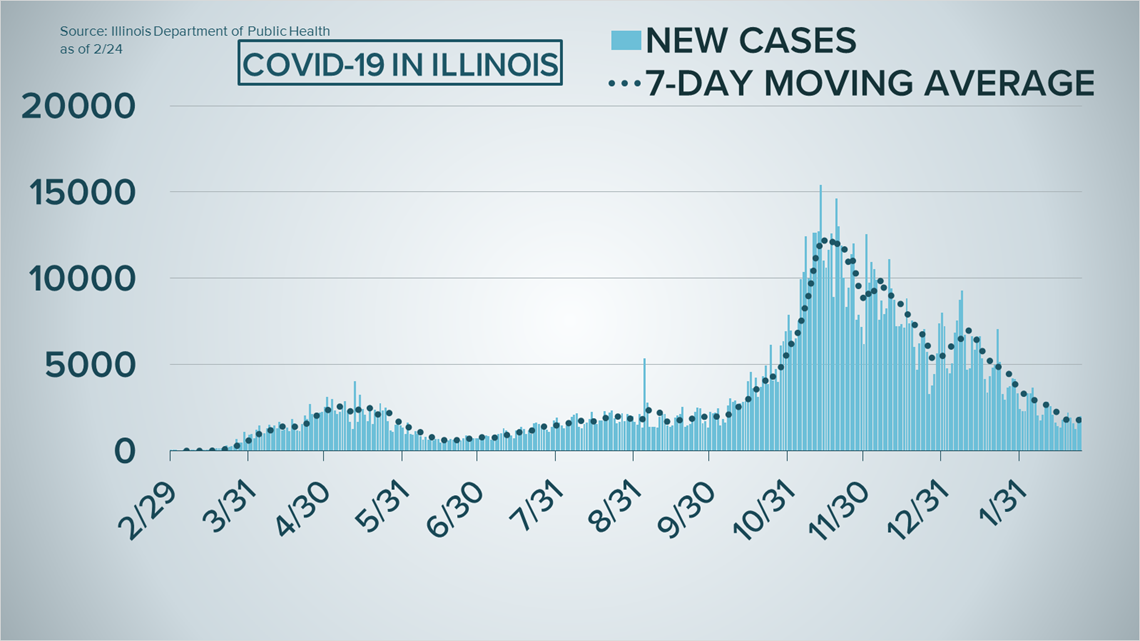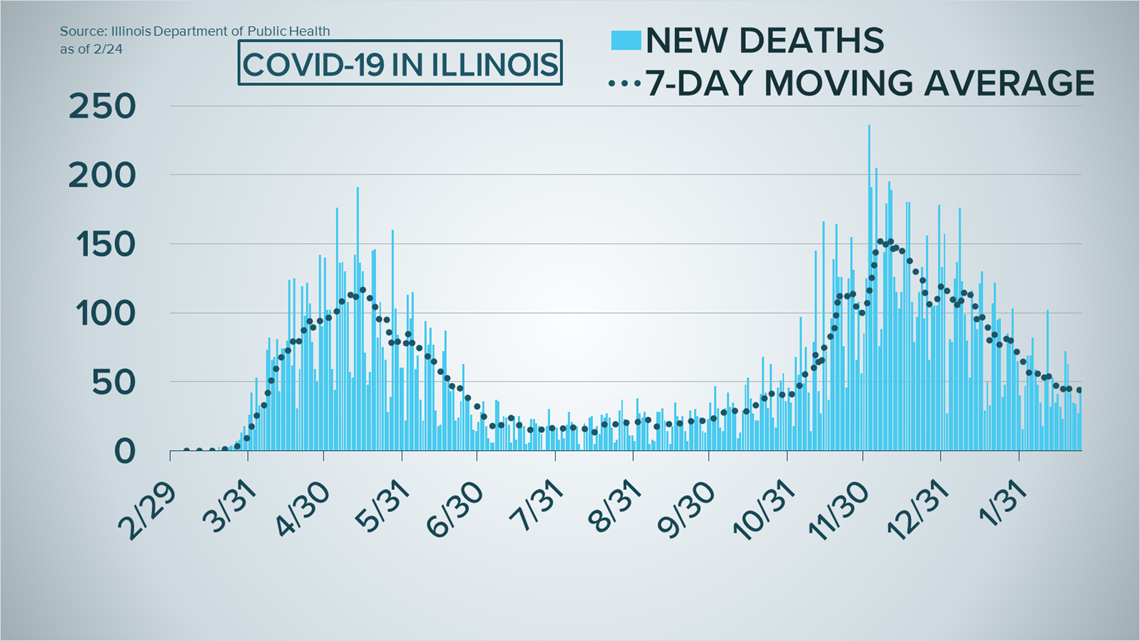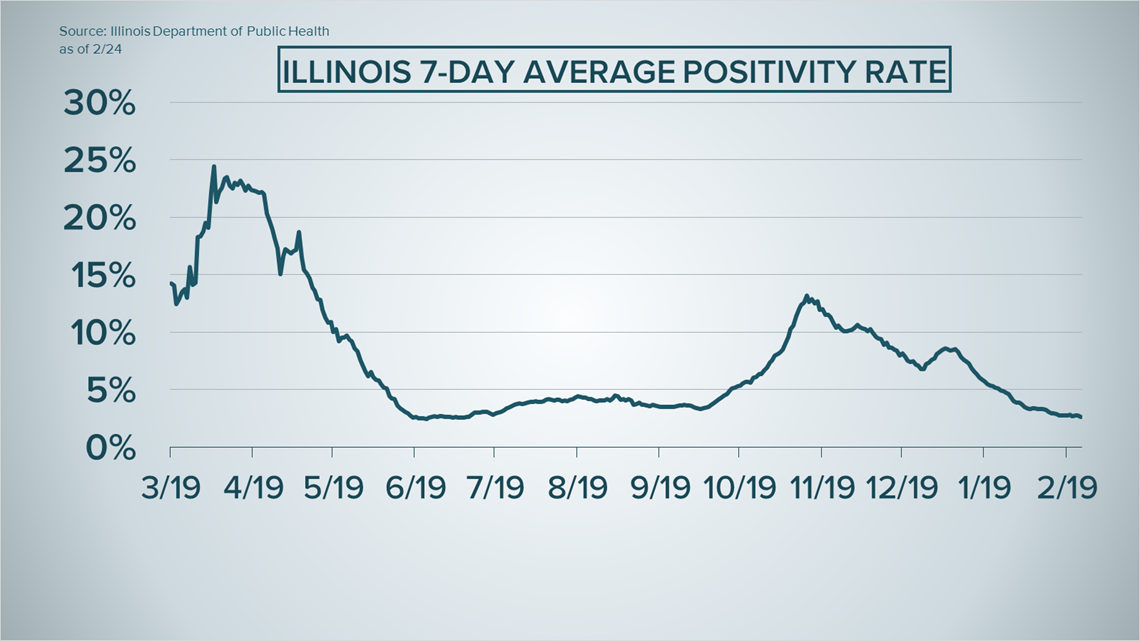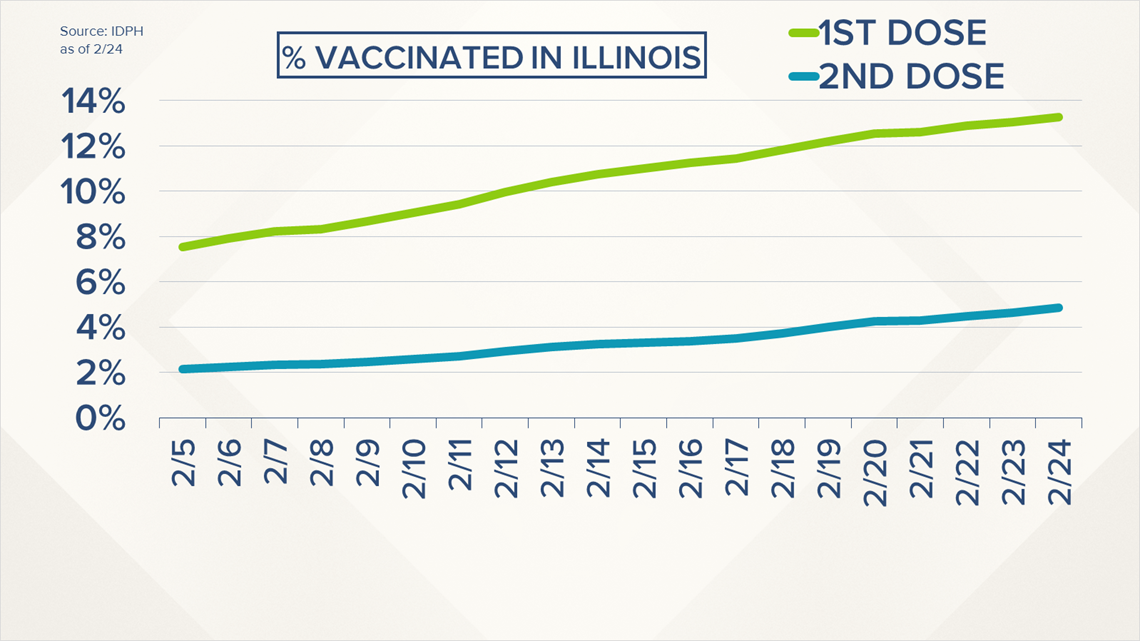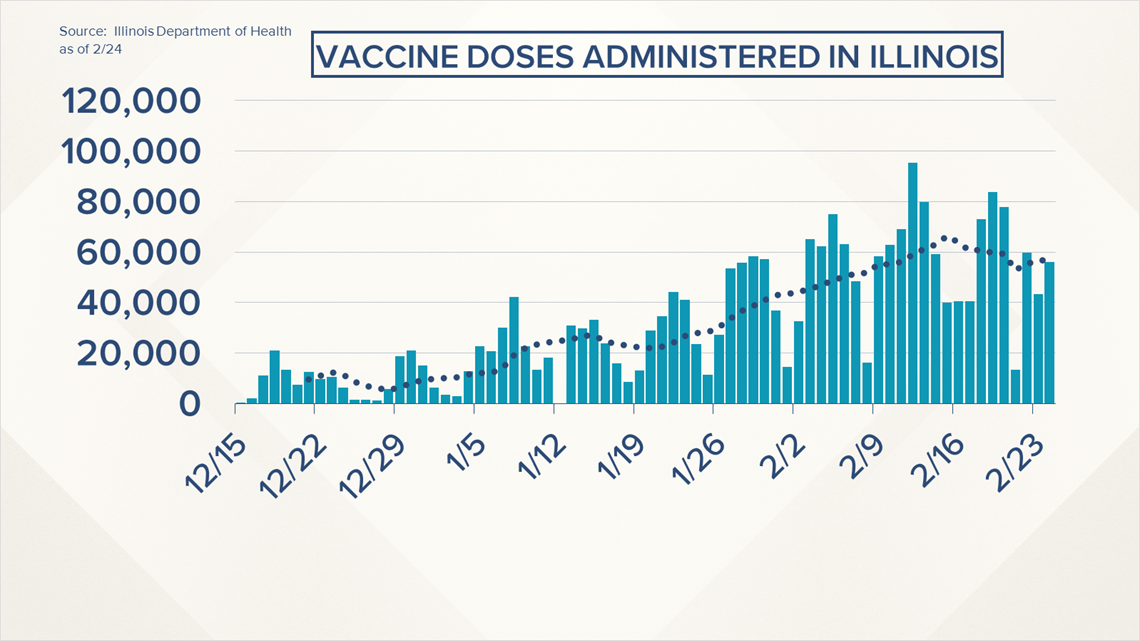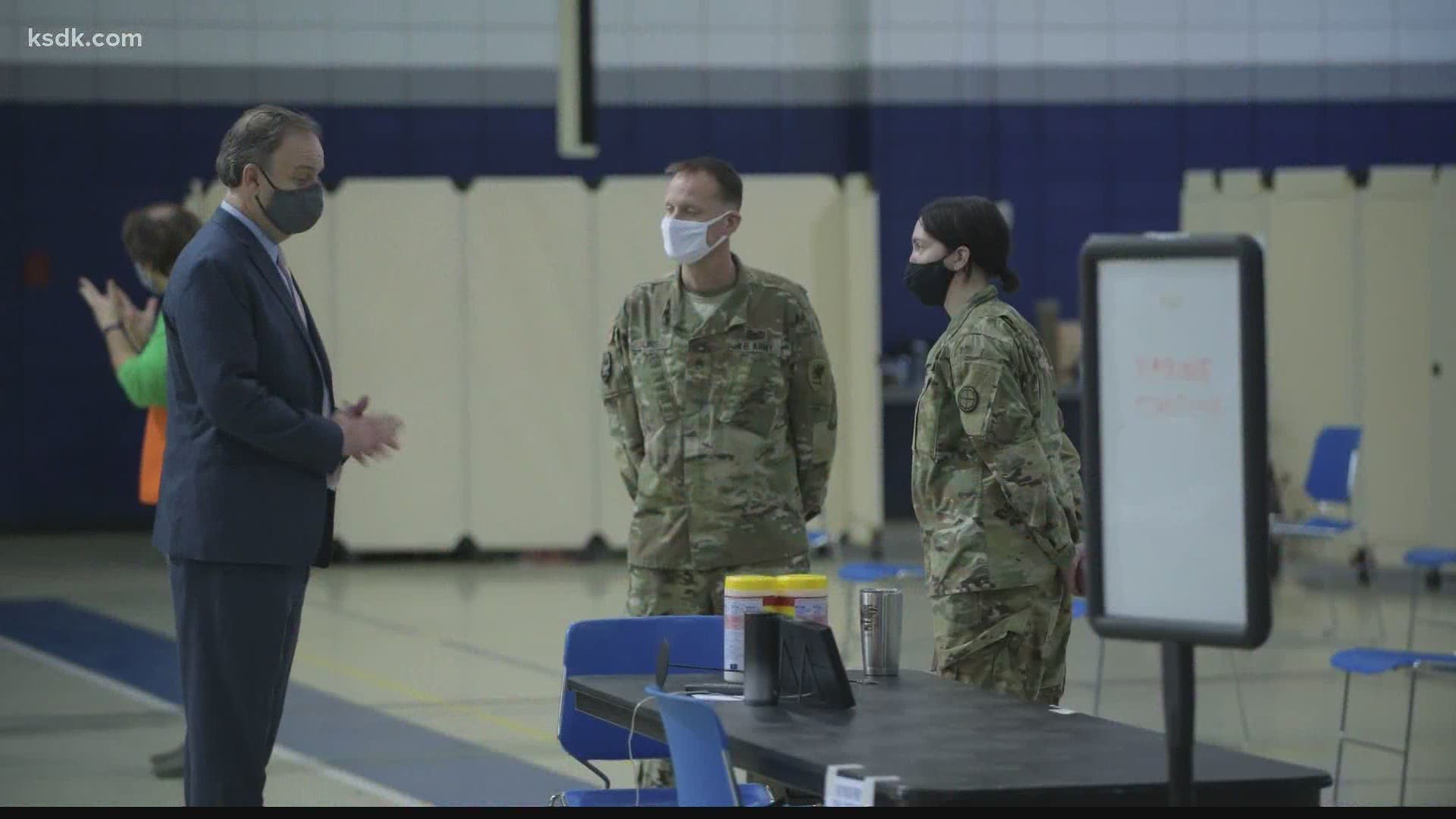ST. LOUIS — The seven-day average of coronavirus hospitalizations increased Wednesday for the first time in more than a month, even as coronavirus numbers in Missouri and Illinois improve.
In a press briefing Wednesday, Dr. Alex Garza — the incident commander of the St. Louis Metropolitan Pandemic Task Force — said hospitalizations and admissions have "plateaued" in the area after a sharp decrease for the last few weeks.
The seven-day average for hospitalizations increased from 310 to 312, the first increase in the average since Jan. 8. The seven-day average for admissions remained the same Wednesday but increased each of the previous three days.
"This is just another reminder that COVID has not gone away," Dr. Garza said of plateauing hospital numbers in the region. "That it's still out in the community and that we still need to be diligent about preventing spread."
The plateauing comes as both Missouri and Illinois have reported improving COVID-19 numbers in previous weeks.
According to CDC data, Missouri has the second-lowest case rate per capita over the last seven days, 8.4 cases per 100,000 people. The state's positivity rate of 6.2% over the last seven days is down from the peak seven-day average of 23.1% on Nov. 11. The state's seven-day positivity rate is the 33rd lowest in the country, according to the CDC.
Illinois has the 15th lowest new case rate per capita, according to CDC data. They also have the sixth-lowest seven-day positivity rate of any state in the country at 2.8%, according to the CDC.
With vaccination efforts ramping up, Dr. Garza said we are moving closer to the end of the pandemic every day. Although the end is now in sight, Dr. Garza said it is not the time to get complacent.
Dr. Garza called on his military experience to talk about how important this moment in the pandemic is. He compared where we are in the pandemic to one of the most dangerous times of his military deployments: the last month before returning home.
"When I was deployed to war, the troops always said the most dangerous month was that month before you rotated back home," Dr. Garza said. "And perhaps that was because you became distracted because you started thinking about what it was going to be like when you got home. I say these things because although we can reasonably start thinking about what is it going to look like when the pandemic is over [...] but also, we can't lose focus now."
Dr. Garza said progress toward the approval of a single-shot vaccine from Johnson & Johnson is good news, but he said it will not make a significant impact in vaccine numbers in the immediate future. He said the numbers should ramp up significantly in the next few months, though.
"[Johnson & Johnson] have projected to get up to significant quantities within the next couple of months," Dr. Garza said. "That is consistent with what Pfizer and Moderna are saying as well, and so we believe within the next two months, that we're going to have supply getting closer to meeting demand."
The following data are the combined figures from the four major health systems (BJC HealthCare, Mercy, SSM Health, St. Luke’s Hospital) that are part of the task force, for Feb. 24.
- New hospital admissions (data lagged two days) increased from 41 yesterday to 50 today.
- The seven-day moving average of hospital admissions (data lagged two days) remained the same at 45* today.
- The seven-day moving average of hospitalizations increased - from 310 yesterday to 312 today.
- Inpatient confirmed COVID positive hospitalizations increased from 322 yesterday to 334 today.
- Inpatient suspected COVID positive hospitalizations decreased – from 41 yesterday to 32 today.
- The number of confirmed COVID positive patients in the ICUs decreased – from 76 yesterday to 75 today.
- The number of confirmed COVID positive patients on ventilators remained the same at 51 today.
- The number of COVID deaths increased – from 5 yesterday to 6 today.
- The seven-day moving average of COVID remained the same at 6 today.
- Across the system hospitals, 48 COVID-19 patients were discharged to home yesterday, bringing the cumulative number of COVID-19 patients discharged to 19,194.
- Today, staffed bed hospital capacity is at 83%, an average across our task force hospitals. The ICU’s are at 84% of their total staffed bed capacity.
*A delay in test results has changed some admissions data, also changing the seven-day moving average. Those changes are reflected below.
- 2/16: 37 admissions, 43 seven-day average
- 2/17: 47 admissions, 42 seven-day average
- 2/18: 39 admissions, 42 seven-day average
- 2/19: 51 admissions, 43 seven-day average
- 2/20: 45 admissions, 41 seven-day average
- 2/21: 48 admissions, 43 seven-day average
- 2/22: 42 admissions, 44 seven-day average
- 2/23: 41 admissions, 45 seven-day average
- 2/24: 50 admissions, 45 seven-day average
In Missouri, the state's health department reported 476,351 cases and 7,894 deaths as of Wednesday, a single-day increase of 560 cases and nine deaths.
The department also reported 4,422,930 PCR tests, an increase of 11,920.
The state's dashboard said the seven-day positivity rate was 6.2%.
The state's vaccine dashboard reported 1,084,528 doses administered, an increase of 37,953. The dashboard said 11.8% of people have received at least one dose — up from 11.5% — and 5.8% of people have received both doses — up from 5.5% yesterday.

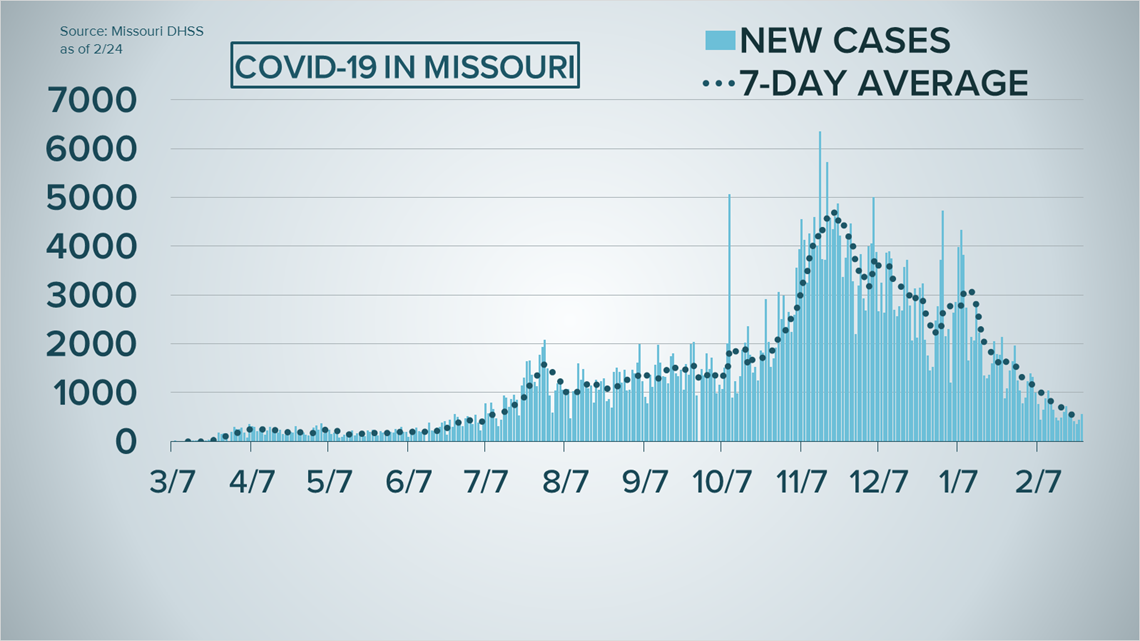

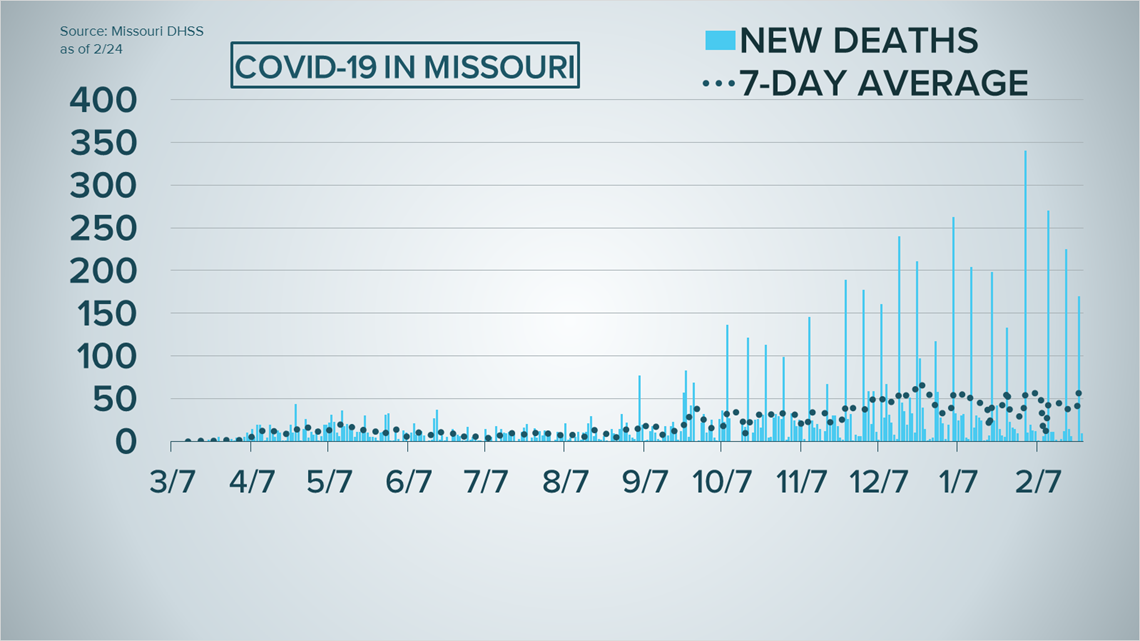

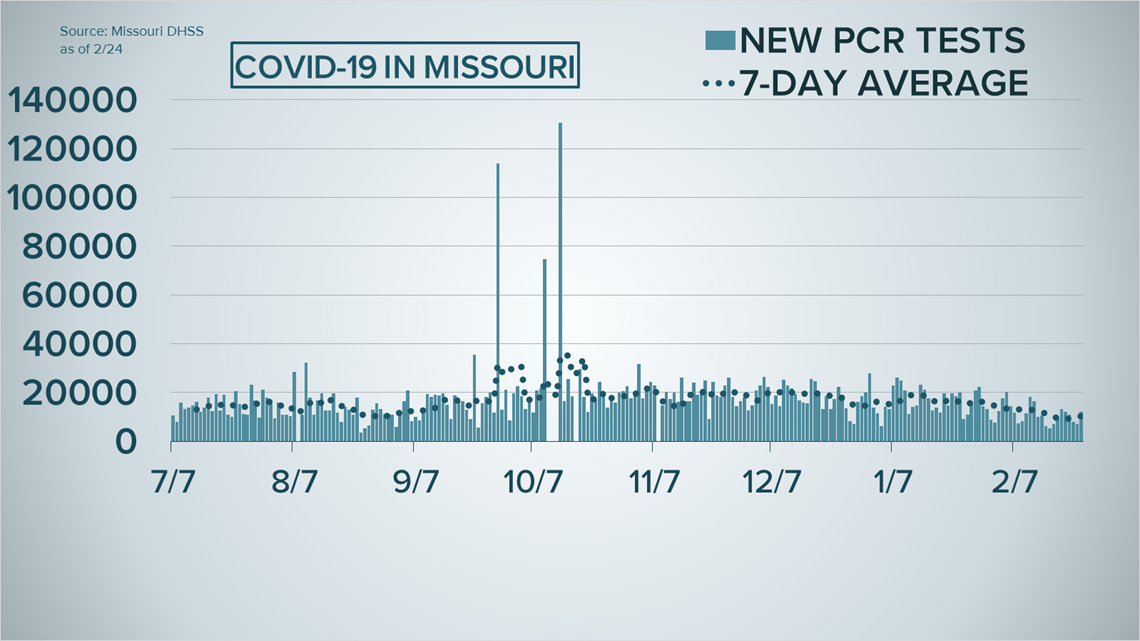

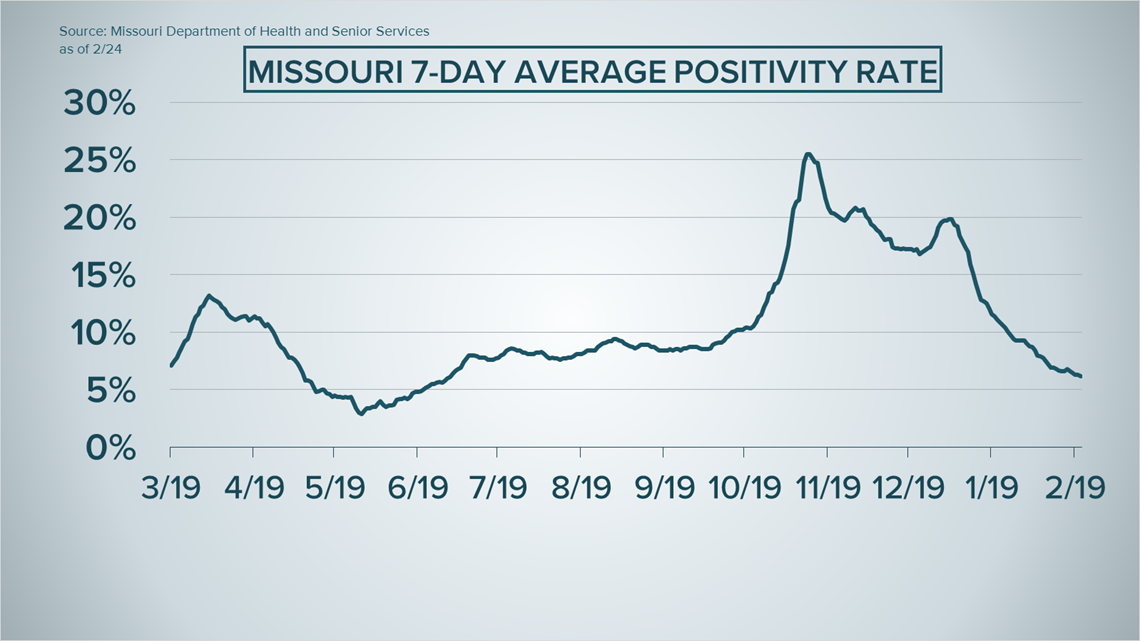

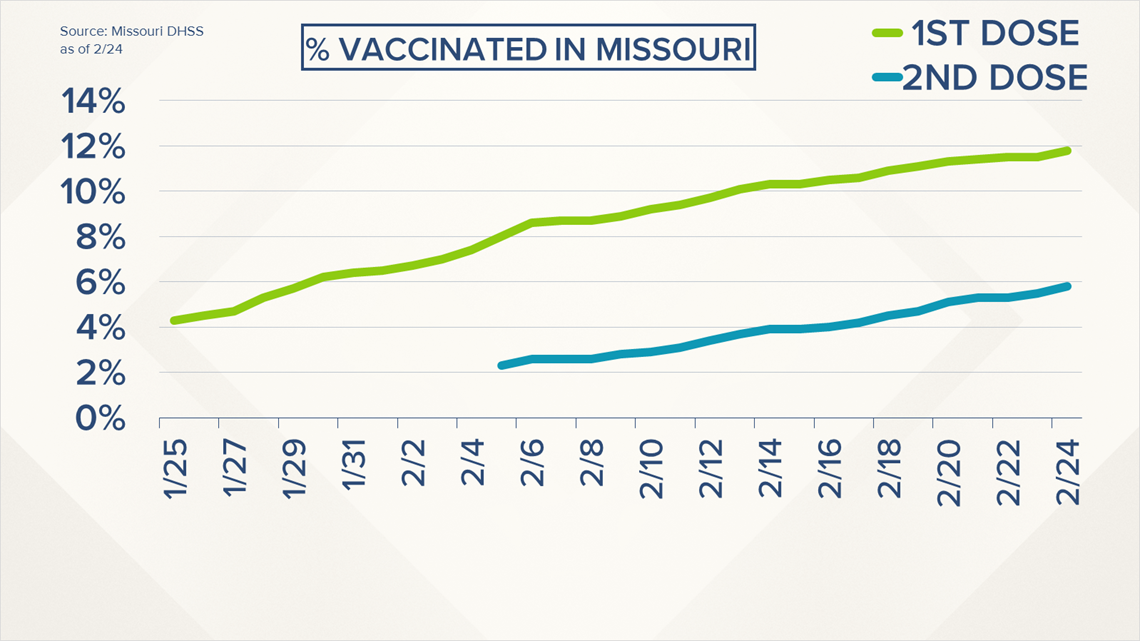

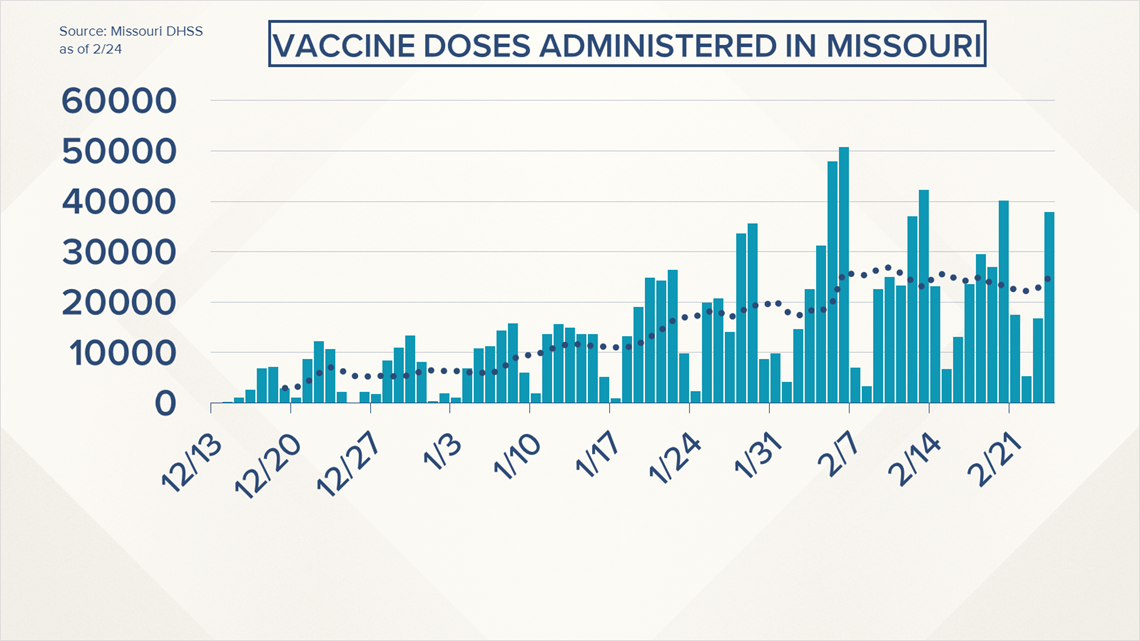
In Illinois, the state's health department reported 1,179,342 cases and 20,374 deaths as of Wednesday, a single-day increase of 2,022 cases and 44 deaths.
The state's department also reported 17,804,537 tests, a single-day increase of 82,976.
The state's positivity rate decreased Wednesday from 2.8% to 2.6%.
According to the state's vaccine dashboard, 2,310,929 doses have been administered in the state, an increase of 55,947 doses in the last 24 hours. According to the state's data, 13.28% of people have at least one dose — up from 13.06% — and 4.86% have received both doses — up from 4.64%.

